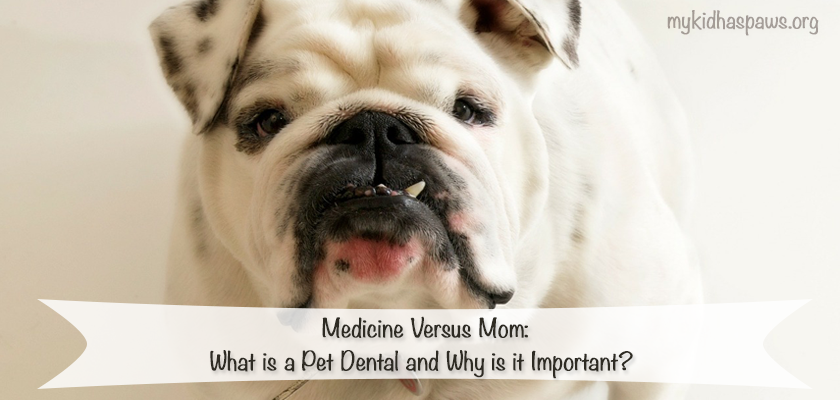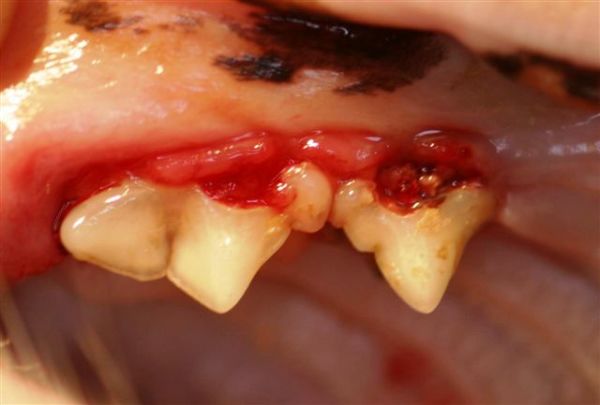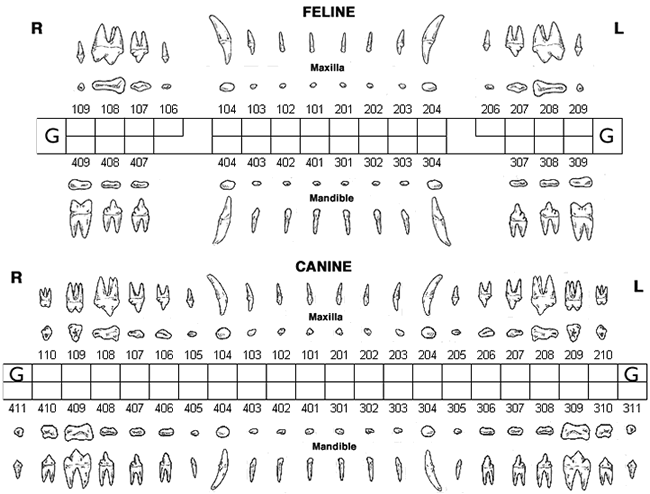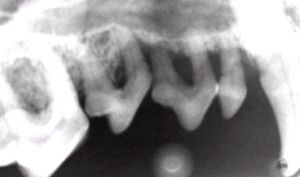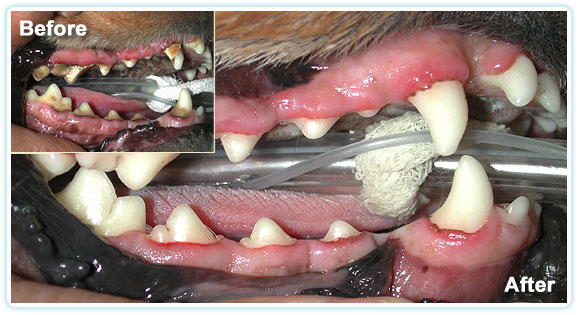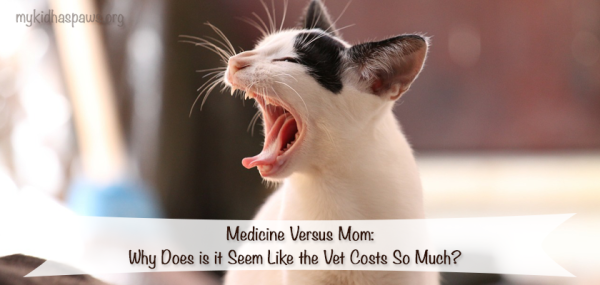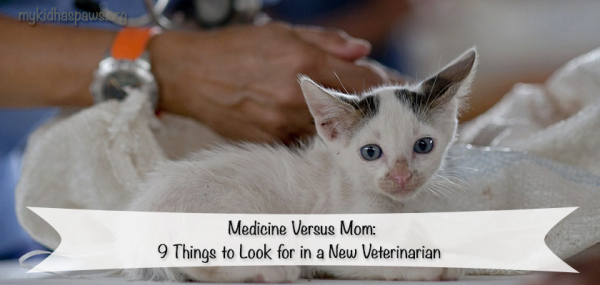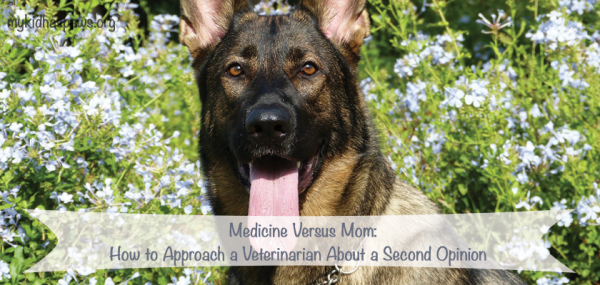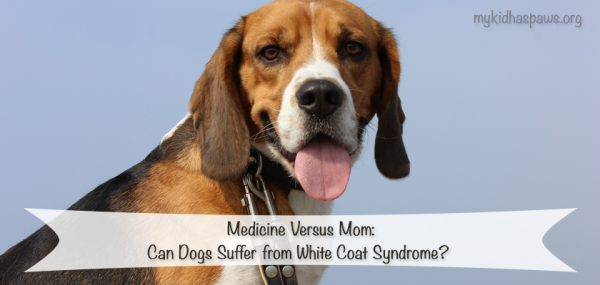
Carol Bryant from Fidose of Reality and myself, have decided to bring together our experiences in order to give you two sides to the same story. If you missed our inaugural post of Medicine versus Mom, you can check it out here.
If you aren’t familiar with Carol Bryant, she is a good friend and fellow pet blogger. She is the founder and CEO of Fidose of Reality. If you haven’t checked out her blog, you really should! As a seasoned blogger and writer she brings her dedicated pet parent perspective to share will all “Dog Lovers of the Highest Order”. Her posts are always a must read for me, and for any other pet parent out there. As we progress through our Medicine versus Mom series, I hope to share with you even more reasons why Carol is awesome!
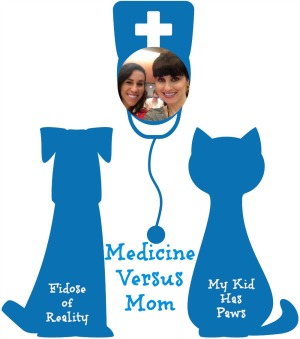
I have worked for two veterinarians in the past who didn’t wear white coats. They did so for a number of reasons.
Firstly, they felt that not wearing a white coat made them more approachable to pet parents. Often, they would wear scrubs or regular work clothes to avoid pet parents feeling like they were being patronized, or talked down to.
Secondly, being a veterinarian or a veterinary technician is a messy job. White should be avoided whenever possible.
Lastly, both doctors felt that white coats made their patients less comfortable in the exam room.
It isn’t a secret that humans suffer from what doctors like to call white coat syndrome. The Mayo Clinic describes this phenomenon as white coat hypertension. This occurs when patients blood pressure rises in the hospital, or in the presence of a doctor (Mayo). Meaning, many humans fear the doctor in some way even when they know that they have to be there, or have willingly visited the doctor on their own.
Now imagine how those same people, who suffer from white coat hypertension, would feel if they didn’t know where they were going, and were brought to the hospital where no one could explain to them why they were there, or how it would benefit them.
We can’t improve the human-animal communication in any way, but what we can do is everything to make our pets more comfortable inside the veterinary hospital.
Research conducted by Ohio State University found that a group of retired racing greyhounds did experience higher than normal blood pressures when they were taken inside a veterinary hospital as opposed to their home (Ohio State University). The study also concluded that the blood pressures were still lower at home even when taken by a veterinary student (Ohio State University).
Now the question is….
Although studies have proven that dogs can suffer from white-coat syndrome as it is defined in human medicine, does this actually relate to the white coat, or to the hospital environment in general?
Sharon L. Crowell-Davis, DVM, PhD, DACVB wrote an article about understanding white-coat syndrome. In her article, she stated,
“…[fear] can be caused by the sight of a white coat, stethoscope, or metal examination table; the smell of the hospital; or anything else that patients associate with unpleasant, uncomfortable, or sometimes painful experiences…” (Vetlearn).
Although it can be determined that the white-coat itself its not necessarily the issue, it can add to the overall fear of the veterinary hospital. Therefore, my friends and coworkers were right in their decision to omit the white coat, to avoid adding to the overall fear of the veterinary hospital.
My dog doesn’t like the hospital or white coats, what can I do to help?
Veterinary hospitals can become significantly less scary to patients through the use of classical conditioning. Classical conditioning as discovered by Ivan Pavlov and his dogs states, “classical conditioning involves learning to associate an unconditioned stimulus that already brings about a particular response with a new conditioned stimulus, so that the new stimulus brings the same response (Simply Psychology)”
Classical Conditioning through Fun Visits
First things first, if you have a puppy or young dog, who doesn’t fear the vet, please bring them to your vet’s office to receive treats and socialize. This will prevent your pet from seeing the veterinary hospital as a threat.
Puppy or not, your pet should visit the veterinary hospital for fun visits. Meaning, your pet walks in the hospital and back out of the hospital without every receiving any treatments. Perhaps they receive some treats from the staff, and it never hurts to plop them on the scale for some treats.
Classical Conditioning through Desensitization
If your pet has already exhibited fear to specific stimuli associated with the veterinary hospital, it may be a good idea to bring some of those stimuli home to help with the desensitization process. For example, let’s say that your dog does indeed fear the white coat, and expresses a lot of resistance and tension around white coats. Ask your veterinarian if they have any spare white coats (we had a few at the hospitals I worked at), or order one from a clearance medical sale online, and bring it home. Get your pet used to the object one step at a time. After your pet has accepted that the white coat is in their home, put the coat on and give them lots of treats and spend quality time with them. This desensitization will help tremendously (Vetlearn)!
Always consult your veterinary for alternative options for desensitization. More than anything, it is important that your dog feels as comfortable as possible at the veterinary hospital. This not only will make your life easier, but make it easier for the veterinary staff to treat your pet and monitor their health.
Does your pet have any fears of the veterinary hospital?
For Carol’s Mom perspective on this topic, please visit her blog here.

